Gila monsters are venomous (not poisonous) lizards native to the United States and Mexico. They are easily identified by their red/orange and black coloration. Though these reptiles have a venomous bite, there have never been any recorded incidents of a bite resulting in human fatality. Sadly, these reptiles still carry an overblown reputation that paints them in a monstrous light. Read on to learn about the gila monster.
Description of the Gila Monster
These reptiles are the largest native lizard species in the United States, and they can measure up to 22 in. long from nose to tail. Most of the time, their average weight lies between .77 and 1.54 lbs., but specimens up to 5 lbs. have been recorded. These large reptiles have mottled red/orange and black skin with bumpy looking scales. These rounded scales are called osteoderms, and are actually small bones under the scales.
Interesting Facts About the Gila Monster
Gila monsters are incredibly unique and interesting creatures. These highly misunderstood reptiles are one of many species that are vilified because of superstition and fear. Instead of fearing these creatures, we should appreciate their curious traits.
- What’s in a Name? – Gila monsters (pronounced HEE-la) get their name from the Gila River Basin, in area where this species was once very common. Their genus name, Heloderma, is Greek for “studded skin.” This is a reference to their bumpy osteoderms.
- Venomous vs. Poisonous – These lizards have venom glands in their mouths that inject toxins when they bite a prey item or a predator. It is not uncommon for this species and other venomous creatures to be mistakenly identified as poisonous. An easy rule of thumb to tell the difference: If it bites you and you get sick, it’s venomous. If you bite it and you get sick, it’s poisonous.
- Fear Not! – While they have a venomous bite, Gila monsters are not monsters at all. They are not hunting down humans, spitting venom, or attacking children. These creatures actually avoid humans as much as possible, and are relatively slow moving.
- Self-Storage – Unlike other lizards, Gila monsters cannot drop and re-grow their tails. This is because the tail is an important storage of fat. By storing fat in their tails, these reptiles can survive on only a few large meals per year if necessary.
Habitat of the Gila Monster
These creatures are native to arid zones in the Southwestern United States and Mexico. They are found in succulent deserts, scrubland, oak woodlands, and rocky areas. They prefer to live near burrows, in crevices, and under rocks where they can easily access water sources. These reptiles avoid areas that are flat and open, like farmland.
Distribution of the Gila Monster
Gila monsters have a relatively small range. They are found in the southwestern United States, primarily in Arizona, California, Nevada, New Mexico, and Utah. They live primarily in the Sonoran, Mojave, and Chihuahua deserts. Their range also extends into northwestern Mexico.
Diet of the Gila Monster
These carnivores will feed on a wide variety of prey and food sources. They will eat bird eggs, small birds, small mammals, insects, frogs, other lizards, and carrion. It is not uncommon for them to climb into trees and cactus searching for birds’ nests. These predators feed relatively infrequently, but can eat large amounts when they find prey.
Gila Monster and Human Interaction
Even though there have been no recorded instances of a Gila monster bite resulting in death, people still fear these creatures. They have been made into a villain, when in reality they are shy and avoid humans and other large creatures. Habitat destruction and urban development are causing steady decreases in these lizards’ populations.
Domestication
Gila monsters are not domesticated in any way.
Does the Gila Monster Make a Good Pet
While they may not kill you, these lizards are still venomous and their bite packs a painful punch. In most places it is illegal to own a Gila monster as a pet.
Gila Monster Care
To protect this declining species captive breeding programs have been established. In zoos they are provided with enclosures that allow plenty of hiding places and burrows to explore. They are not particularly active creatures, and thus do not require immense amounts of space to keep happy. Their diet usually consists of rodents and hard-boiled eggs. The first zoo to successfully breed this species was the San Diego Zoo in 1963.
Behavior of the Gila Monster
These creatures are active whenever the temperature suits them the most. As a desert dweller, if the daytime temperatures rise too much, they will be most active at night. If the nights get too cold, they will be more active during the day or early morning and evening. When the temperature gets too cold, they retreat to their burrows and hibernate until spring arrives.
Reproduction of the Gila Monster
Males of this species will wrestle to show their strength and win the affection of females. The strongest male gets to mate with the female. After breeding, she will dig a shallow hole and lay her eggs. The heat of the sun incubates the eggs below the sand. After four months of sun-based incubation, the young monsters will dig themselves out of the nest. They are fully self-sustaining from the moment they hatch.
Beliefs, Superstitions, and Phobias About the Gila Monster
Pioneers created many different superstitions about these lizards. They were made into a villain, and feared greatly by local people. Some (wrongly) believed that Gila monsters could spit venom, jump into the air to attack people, breathe noxious fumes, and sting with their forked tongue. All of these are laughable, but caused intense fear and hatred towards these reptiles.


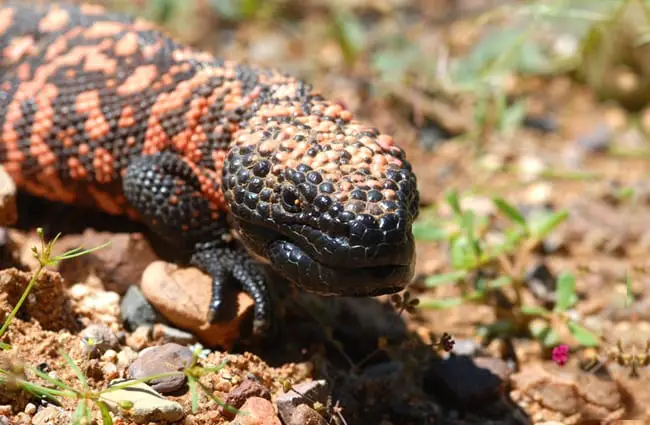


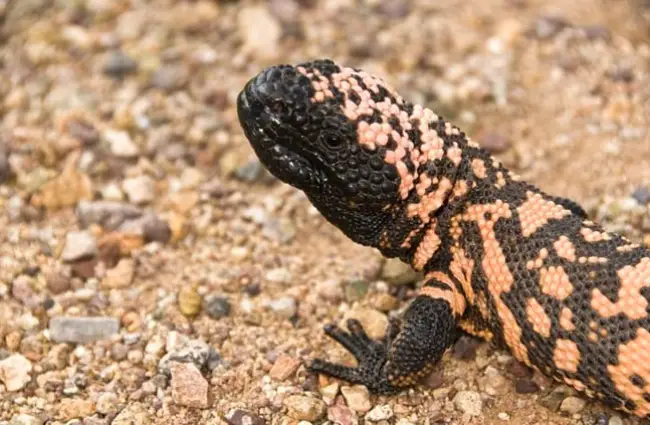
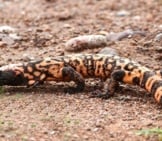

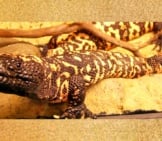
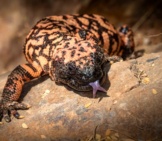
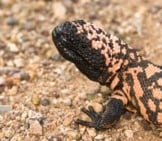
![Red Angus Closeup of a beautiful Red Angus cowPhoto by: U.S. Department of Agriculture [pubic domain]https://creativecommons.org/licenses/by/2.0/](https://animals.net/wp-content/uploads/2020/03/Red-Angus-4-238x178.jpg)












![Red Angus Closeup of a beautiful Red Angus cowPhoto by: U.S. Department of Agriculture [pubic domain]https://creativecommons.org/licenses/by/2.0/](https://animals.net/wp-content/uploads/2020/03/Red-Angus-4-100x75.jpg)

